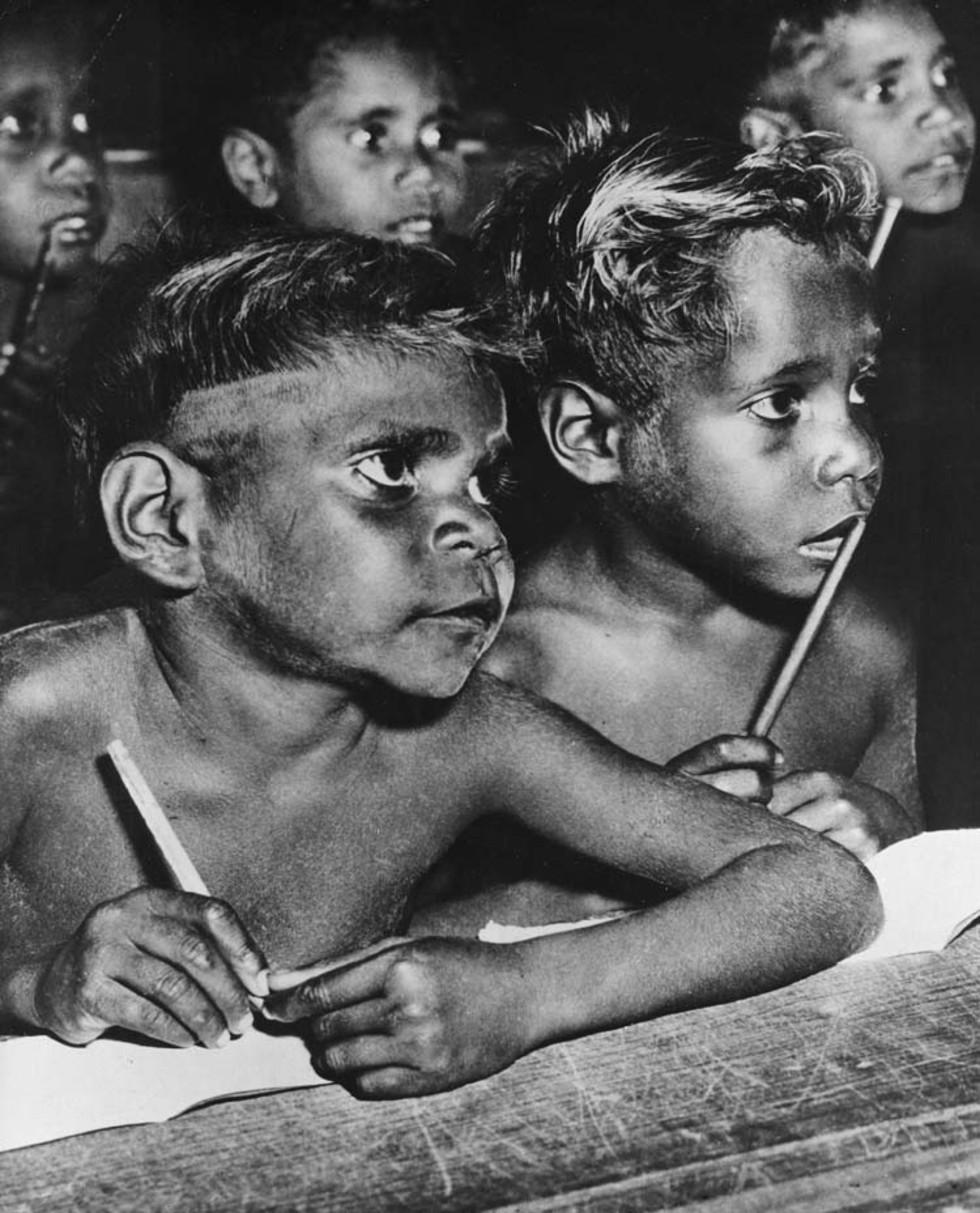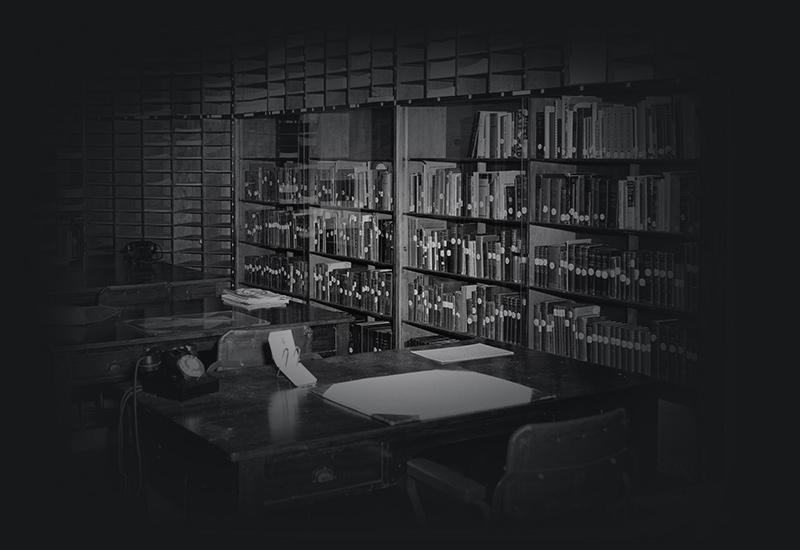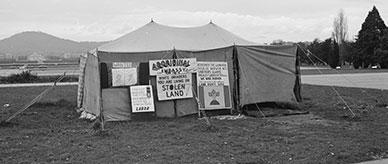


About this record
This black-and-white photograph shows five Indigenous children at school. Shot in close-up the photograph shows the young children gazing attentively, pencils in hand. They are seated in two crowded rows at long wooden desks and have half-size exercise books in addition to their pencils.
Educational value
- This image, showing young Indigenous children, was taken on behalf of the Australian National Travel Association and was intended for use in promoting tourism to northern Australia, probably to the Northern Territory. The use of cropping, lighting and other hallmarks of professional photography combine to suggest that this photograph was to be used in posters or other advertisements to promote travel.
- The photograph was almost certainly taken in a school on an Indigenous reserve or mission. Indigenous children in the Northern Territory did not have access to the formal public schooling provided by the state until the late 1960s, and in other parts of Australia Indigenous children enrolled in state schools could be removed if non-Indigenous parents objected to their attendance.
- In spite of their wide-eyed attentiveness, these young children were unlikely to be taught as much as non-Indigenous students in the cities. Teachers at the poorly equipped reserve or mission schools were at best inexperienced or poorly qualified, and at worst completely untrained. The focus of teaching even at this early age was not the standard state curriculum but a modified curriculum that went to Grade 3 or 4 only.
- Non-Indigenous Australians generally had very low and racist expectations of what these children could or should learn – nothing more than basic literacy and numeracy and manual skills. This level of education was considered appropriate for preparing children like these to be domestic servants or station labourers. Efforts by the children themselves and their communities for further education were often resisted by white authorities.
- Until the late 1960s none of the teaching took place in the children's own language and they were expected to learn to read and write in English. Children at reserve or mission schools were consistently forbidden to speak their own language at school, even in the playground. Children as young as those seen in the photograph received corporal punishment for breaking language rules.
Acknowledgments
Learning resource text © Education Services Australia Limited and the National Archives of Australia 2010.
Need help with your research?
Learn how to interpret primary sources, use our collection and more.

